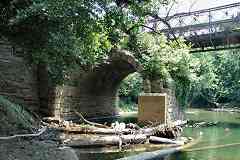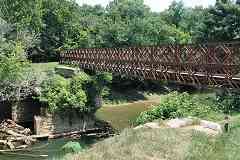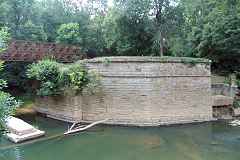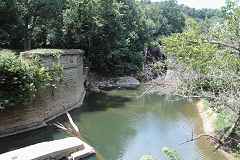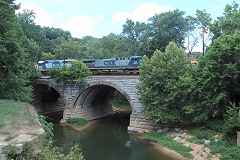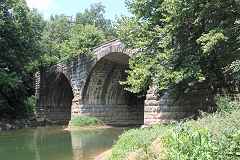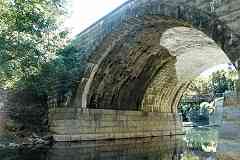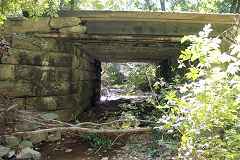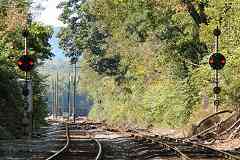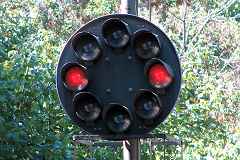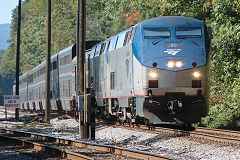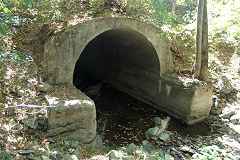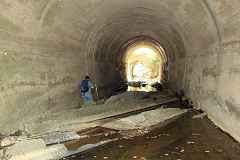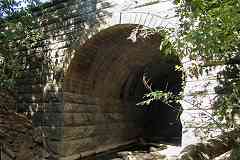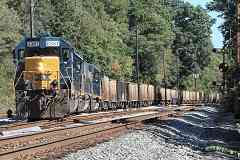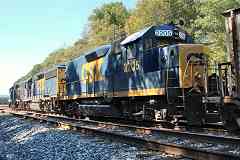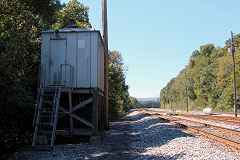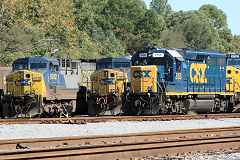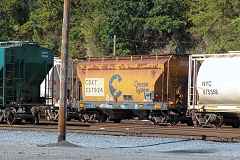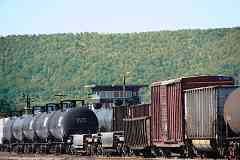|
Brunswick Yard gets going in earnest here. A settlement about 2 miles ahead
was established in 1717 as a trading post of the Susquehanna River Trading Company.
The site was chosen in part because it is a good location to cross the Potomac River;
frequent use by German immigrants led to the intitial name of German Crossing. More
names followed: German Crossing changed to Berlin, then Barry, then Brunswick.
The first boat along the C&O Canal arrived in 1834.
B&O was unhappy with crowding at its Martinsburg, West Virginia facilities during
the 1880s, so decided to build new ones closer to Washington, DC and
Baltimore, MD. They chose Brunswick as the new location, and by 1891 had
constructed rail yards and facilities that extended parallel to the river for
several miles.
According to Google Earth, the east side of Brunswick Yard is about 25
feet above the normal level of the Potomac River, which is hidden on the left.
Since the Potomac experiences major floods about every 10 years, the Location C
electrical box qualifies for a perch with some breathing room.
| 